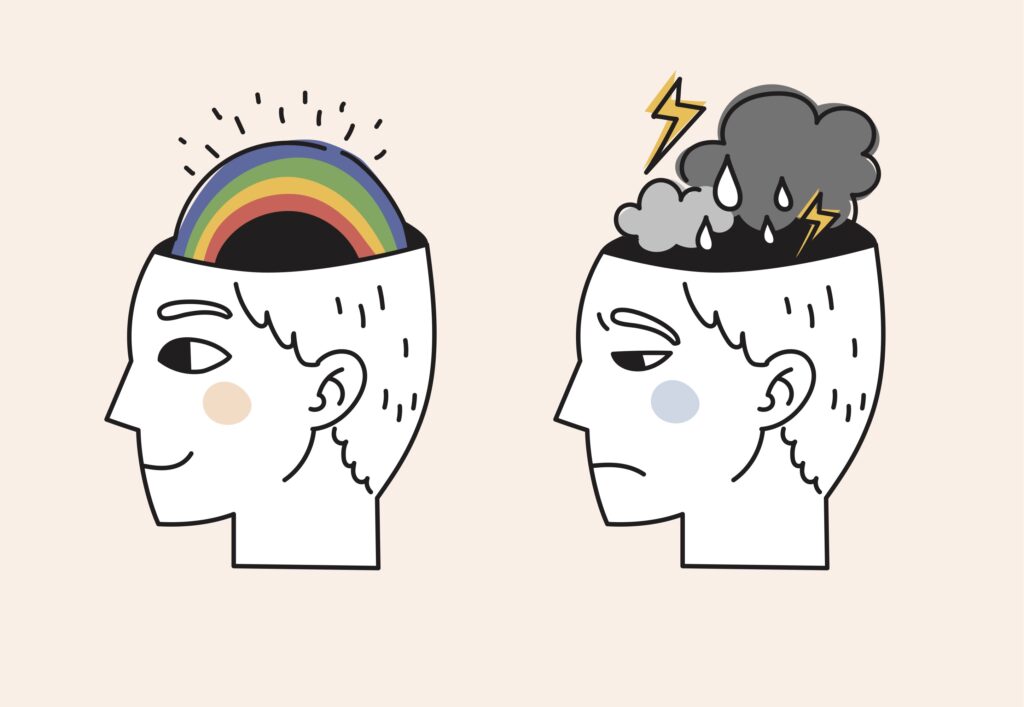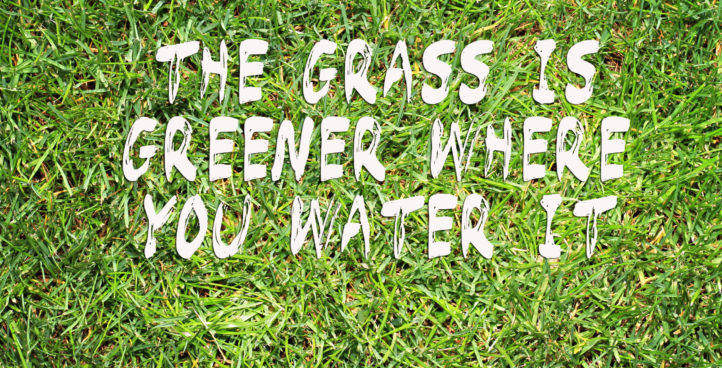WHAT HAPPENS BETWEEN YOUR EARS, MATTERS!

Your brain is an integral part of your body and nervous system. I think of that space between your ears as a theatre, where many dramas unfold. When you play emotional, fearful dramas in your head, your body has no way of knowing that they are merely fantasies, and it produces a cascade of chemicals to prepare for the fantasized emergency.
Neuroscientists tell us that if we do this often enough, the alarm centre in the brain gets over sensitive, a little like a smoke alarm that goes off at the slightest puff. The neural connections between perceiving a possible threat and the alarm signal strengthen, and your body plunges into a semi-permanent emergency mode: the fight, flight or freeze reaction.
We have started a downward spiral in our bodies, by increasing cortisol, which then influences the responsiveness of your white blood cells, which in turn increases chronic inflammation, the forerunner of most disease processes.
We live with uncertainty
The truth is, as humans, we live with uncertainty, we don’t know what the future will hold. Will that new job offer work out in the long run? Should we go for another round of IVF? Will the value of houses keep going up? Is our partner cheating on us? How can we best prepare for climate change? Will there be another war in Europe?
We can of course strategize for emergencies. We can prepare a plan for how to avoid damage likely to arise due to rising sea levels, we can plan answers to interview questions we may be asked. All this “executive” planning takes part in the pre-frontal cortex, which is not so closely connected with the emotional part of the brain, and does not lead to the same toxic chemical cascade.
But what about the more emotional stuff ? The stuff we “can’t help” worrying about? The “disaster “ movies we are showing ourselves in our heads?
There is an answer, based on our biology, and on neuroscience. We can deliberately focus on producing beneficial chemical cascades, which strengthen our feel good factor and safeguard our health.
Bear with me, while I give you an example:
When I sit quietly on the sofa, my dog, Benny, comes up to me, head butts my arm out of the way, pushes his head in through the gap, and lays it on my lap. Sometimes, depending on the time of day and if it is accompanied by an intense gazing into my eyes, it is a reminder that it is dinner time. More often than not, however, it is a nudge for me to pat his head, massage the back of his neck or his ears, which generally sets off a deep, “purring” sound of appreciation and pleasure .
As I do that, I am aware that this is a mutually rewarding activity. My study of neuroscience tells me that this connection is releasing a tide of beneficial changes in my body: lowering blood pressure, increasing the release of oxytocin which in turn reduces the alarm reaction in my brain.
My brain and body is switching from fight or flight to calm and connect mode. If I had been in a stressful situation, my racing thoughts or heart or breathing are slowing down. My immune system is getting stronger, my heart rate variability (HRV) is increasing . This leads to a higher vagal tone, which in turn reduces the inflammation in my body.
There is another way.
The good news is, even if you don’t have a Benny or a young child, or a partner in your life to cuddle, as you go through your day you probably have moments of connection with others, whether it be a hug or the sharing of a smile, a story, or joke, and the same beneficial chemical cascade is released through your body.
Professor Barbara Fredrickson is an expert on positive emotion. She calls these brief connections, “micro moments of positivity resonance” and her PEP ( Positive Emotions and Physiology) Lab has studied the effects of such brief, positive emotions on our brains and bodies.
Her research shows that aside from these shared moments, our daily experiences of positive emotions such as joy, delight in accomplishment, awe in nature, enjoyment of artistic creation, watching short video clips of animals or children playing, or inspiring movies, all create beneficial changes in our bodies, and “UNDO” the effect of stress. We are building stronger neural pathways that promote better physical and mental health.
AND, we can also focus more on those experiences, we can re run them in our heads, in exactly the same way as we may have re run the disaster movies. We don’t have to start suppressing the negative fantasies, all we have to do is focus more on the good stuff, re-run it, embed it deeper. In this way, we are building an upward spiral of positivity that has far reaching effects on our health and wellbeing.
So, yes, what happens between your ears , MATTERS.
EMBRACE ,EMBODY, EMBED, EMPOWER
This mindfulness exercise is a way of embracing and savouring those positive moments so they become more embodied, more deeply embedded in our unconscious, and set us on a more empowered path.
Each evening, spend a little time “taking in the good”. Just before sleep, put your hand over the heart area, and do some deep, calm breathing. Then re- run your good, heart-warming, fun or inspiring moments like a movie in your head. Have your movie in vibrant technicolor, add surround sound and re-capture the feeling.
This evokes the same feel good bodily reactions and embeds the memory deeper.
Of course, you can also do the exercise as a calming and stabilising technique, before or after a difficult situation.
Research into memory shows that over time, it becomes more abstract and less vivid. So don’t let your good stuff become a ticked off, « been there, done that, have the tee shirt » item. Instead, embrace it, embed it, embody and empower yourself by making it a nightly habit to watch your own re- runs!
As a confirmed movie buff, I would much rather watch a good movie twice, than sit through a bad one! Adopt the same principle with the movie theatre in your head.
References:
Davison, Richard and Begley, Sharon: The Emotional Life of Your Brain . Hudson Street Press 2012.
Fredrickson,Barbara: Positivity publ One World Publications 2009
Fredrickson, Barbara: Love 2:0 . Hudson Street Press 2013
Hanson, Rick and Mendius, Richard : Buddha’s Brain . New Harbinger, 2009.
Hanson, Rick: Hardwiring Happiness. Rider 2013

‘Taking Care of YOU’ A morning of Relaxation, Mindfulness and Positive Psychology €75 – Book Online
SAT 27TH APRIL 10AM TO 1PM . IN PERSON, DUBLLIN 3/5.
A morning workshop incorporating relaxation, mindfulness, and positive psychology techniques with chartered psychologist and registered yoga teacher, Margaret Forde.

‘TAKE THE STEPS’ IN PERSON MINDFULNESS AND WELLBEING 5-WEEK COURSE (DUBLIN) – BOOK NOW – €150 (€50 DEPOSIT)
“Take the Steps” Mindfulness and Wellbeing Courses
Clontarf/Raheny – Next 5 week course (in person) starts THURSDAY 26TH SEPT 7.30 pm Fee: €150
LIVE ON ZOOM – NEXT 5 WEEK COURSE STARTS TUESDAY 1ST OCTOBER 8PM FEE €150
Learn to relax, reduce stress, anxiety and overthinking and BE more mindful in your daily life. You will build new and lasting happiness habits and ways of thinking that benefit not only you, but your relationships with family and friends. The training uses both left brain and right brain techniques, to “re-wire” the brain to focus on positivity and wellbeing in a natural way. All the information and techniques used are evidence based.
https://positivepsychology.ie/product/take-the-steps-book-online-now-in-dublin/
